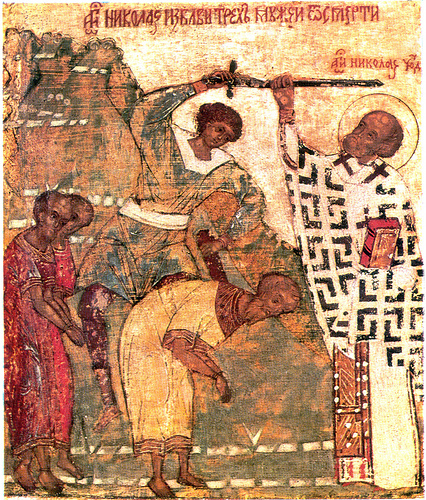Revelation According to the Rules
A recent lecture by Peter Leithart:
Continue reading
[This post has been refined and included in Sweet Counsel: Essays to Brighten the Eyes.]
Continue reading
 Ritual is powerful stuff. Much of modern evangelicalism prides itself in rejecting liturgy and being “open to the Spirit,” and then turns this “openness” into an uninspired (and very uninspiring) human formula, in place of the inspired Divine one. Instead of following a pattern found in every part of the Bible (worship is literary architecture), we are stuck with either erroneous traditions or off-the-cuff rambles which, although “open to inspiration,” somehow sound exactly the same each week. Human beings love repetition in every area of life, and ritual is a prime method of teaching truth and holiness.
Ritual is powerful stuff. Much of modern evangelicalism prides itself in rejecting liturgy and being “open to the Spirit,” and then turns this “openness” into an uninspired (and very uninspiring) human formula, in place of the inspired Divine one. Instead of following a pattern found in every part of the Bible (worship is literary architecture), we are stuck with either erroneous traditions or off-the-cuff rambles which, although “open to inspiration,” somehow sound exactly the same each week. Human beings love repetition in every area of life, and ritual is a prime method of teaching truth and holiness.
 The letters to the pastors of the seven churches in Asia are a prophecy of the history of the Church, according to dispensationalist Bible teachers. For interpreters who are committed to a “literal” hermeneutic, this is bending the rules in the direction of a “literary” hermeneutic, which is excellent. However, they apply the letters to the wrong future, and overlook the obvious allusions to the past.
The letters to the pastors of the seven churches in Asia are a prophecy of the history of the Church, according to dispensationalist Bible teachers. For interpreters who are committed to a “literal” hermeneutic, this is bending the rules in the direction of a “literary” hermeneutic, which is excellent. However, they apply the letters to the wrong future, and overlook the obvious allusions to the past.
 Priests and Levites of All Nations
Priests and Levites of All NationsPart 1 | Part 2 | Part 3 | Part 4 | Part 5 | Part 6
In this final post on the structure of Ephesians, we will cover stage 6 (Conquest/Atonement) and stage 7 (Glorification/Booths). (Unfortunately, I can’t refer to them as cycles because there are 8 cycles, as previously discussed.)
A common interpretation of the “armor of God” relies on the assumption that Paul is using the kit of a Roman soldier as a metaphor. This shows how fragmented is our understanding of the Bible, an organic text which is not fragmented at all, and not reliant upon the various contemporary cultures anywhere near as much as we assume. The armor in Ephesians 6 is that of a priest, a priest with a sword, fulfilling his guard duty at the gate of God.
“For thus says the Lord of hosts: ‘Once more (it is a little while) I will shake heaven and earth, the sea and dry land…”
(Haggai 2:6)
Many modern commentators hamstring various parts of the Bible so they don’t run against the grain of modern scientism and historical revisionism. They do this by “classifying” the bits of Scripture that offend modern theory into neat literary genres. “If Genesis is poetry, it can’t be historical,” and other stupidities. Nice try. Another one is “apocalyptic,” a genre which, to the eye of unbelief, might appear to actually exist.
The first cycle of Ephesians expressed the call and adoption of God’s sons as a new Creation (Sabbath). At its very centre was the phrase, “the forgiveness of our trespasses.” At the centre of the second, which concerned the removal of the Veil of Moses, was “the sons of disobedience,” a Division between the sons of the promise and the sons of the flesh (Passover). This division was obviously no longer founded on genealogy but began with voluntary allegiance to Jesus. Circumcision or uncircumcision became irrelevant.
 Part 1 here.
Part 1 here.
Bible commentators will tell you that Paul’s epistle to the Ephesians contains great riches. Unfortunately, without any reference to its Mosaic literary structure, it comes across as a jumble of jewels in a treasure chest. However, analysis of the structure allows us to appreciate the fine networks and chains of thought in the literary architecture — and also the clever allusions contrasting old Israel with the New. It also demonstrates Jesus’ fulfillment of the Mosaic Law.
“A seal is meant to be broken.”
During the first of his recent lectures in London, James Jordan tore a page out of his Bible. It was the page announcing the New Testament as a separate book with its own pagination. It is one thing to interpret the New Testament in the light of contemporary literature and history, but their importance pales in comparison to the texts being recognized as a continuation of the Scriptures.